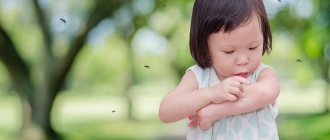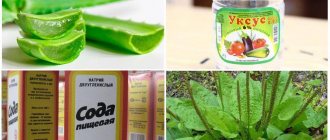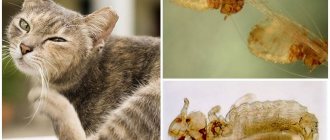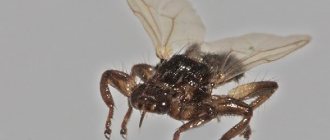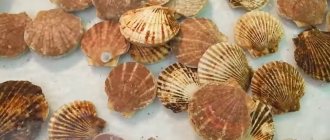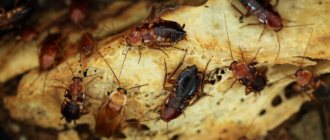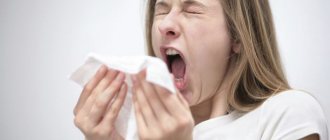Flea allergy and its types
There are many varieties of fleas in the world. Most often, a person suffers from allergies to the bites of such types of parasites as:
- Sand flea (also known as earth flea). Mainly found in tropical latitudes - the Caribbean, Australia, India, Africa. The danger of such bites lies in the fact that if males bite through human skin and suck blood, then females penetrate under the upper layer of the epidermis. A flea bite is unpleasant in itself, but in some cases it can cause allergies. In this case, the bitten person experiences severe itching, leakage of fluid (sometimes purulent) from the wound, swelling, and impaired keratinization of skin cells.
- Human flea. The main victim of this insect is humans, but in some cases animals can also suffer from its bites. Unlike most of its relatives, the human flea is relatively large in size: its body length is about 3 mm. In one jump, such a flea can move a distance of up to 0.5 m in length and up to 0.3 m in height.
- Rat fleas. The bites of these insects pose the greatest danger to human health and life. We are not even talking about an allergy to flea bites, although it occurs quite often. The fact is that fleas that parasitize rats can be carriers of serious diseases - typhoid, anthrax, encephalitis, plague. By the way, it was rat fleas that caused the massive plague pandemics (the so-called “Black Death”) that swept Europe in the Middle Ages. Today, allergies to flea bites that parasitize rats are a relatively rare occurrence. It occurs mainly in rural areas, as well as among residents of the ground, basement, first and upper floors (if non-residential premises in houses are infested with rats).
- Cat and dog fleas. Considering that dogs and cats are the most common domestic animals with which people come into close contact, their parasites often “migrate” to their owners. To avoid a possible allergy to flea bites in humans, it is necessary to wear anti-flea collars on pets and from time to time bathe cats and dogs using special shampoos.
Signs of a bedbug in your home:
tiny blood stains on the pillow or bedding (rust or reddish stains); dark stains (excrement) on the folds of the mattress or seams on linen or furniture fabrics; eggs and shells: light yellow skins about 1 mm in size; actually, bedbugs.
Fleas are not so noticeable in the house. Most often, you can guess their presence by relying on sensations: the characteristic feeling of “jumping” on the skin will most likely indicate an individual of Siphonaptera (the Latin name for a flea). Also, if your animal suffers from flea bites, this will be quite noticeable.
Bed bugs love to hide in the folds and seams of mattresses, furniture, and other small, hard-to-reach places. You can find them in the folds of curtains, in the joints of wooden furniture, or under loose wallpaper. Also look through the folds of your luggage after your trip. As you clean, make it a point to keep an eye out for signs of bed bugs and be aggressive towards them when you spot them. A small infestation is easier to eliminate. However, once the insects multiply, they will be much more difficult to eliminate.
Allergy to flea bites: symptoms
In people who have slight sensitivity to fleas, contact with insect saliva does not cause any serious disruption to the functioning of body systems. Usually the bite is accompanied by a sharp stabbing pain, which then turns into itching. Under normal conditions, the burning and swelling of the papules formed during bites goes away within a couple of days.
However, sometimes the immune system reacts abnormally to such a bite. In such cases, there is a high probability of developing a flea allergy. Its symptoms are as follows:
- hyperemia of abscess-like papules with a small red dot-wound in the center;
- formation of blisters, the center of the blister is usually crowned with a vesicle;
- redness of significant areas around the bites;
- severe itching of the skin;
- increased body temperature;
- swollen lymph nodes;
- swelling of the skin (up to the appearance of Quincke's edema).
In some particularly severe cases, an allergy to a flea bite may be accompanied by difficulty breathing, headaches, dizziness, and indigestion. If a bitten person has breathing problems, clouded consciousness and pressure surges, he must be taken to the hospital as soon as possible. These phenomena may be symptoms of anaphylactic shock.
Flea bites in a child
If parasites bite a child, the symptoms will be more severe. In addition to the manifestations characteristic of adults, there will be severe motor restlessness and excessive excitement. Children become capricious and may cry or show aggression. Characterized by stool disorders, increased body temperature, and difficulty breathing. Urticaria occurs. Sometimes symptoms of intoxication of the body are observed: a general asthenic state, weakness, lethargy, apathy, nausea, repeated vomiting.
Since children's skin is more delicate, wounds take longer to heal than those of adults. In addition, each bite causes changes in the composition of the blood.
The child was bitten by a flea.
Allergy to a flea bite in a child
Flea bites on children are especially dangerous. Due to the fact that children have thinner and more delicate skin, parasites bite children more often and more intensely than adults. In addition, a child's immune system may not always react normally to a bite, which leads to flea allergies.
What do flea bites look like?
A flea bite is impossible to miss. It is easily recognized by its sharp pain, similar to an injection. At the site of the flea bite, a characteristic mark remains - a small red spot with clearly defined boundaries. As a rule, fleas bite not once, but several times. The distance between bites can be about 1-2 cm. Some time after the bite, a person may feel severe itching and notice that the spots are slightly swollen.
In most cases, flea bite marks disappear within a few hours. But in some cases they can cause an allergic reaction. If you notice itching, redness and thickening at the site of the bites, you should seek medical help.
Bites
Such symptoms may indicate that a flea bite has become an impetus for the development of allergies. At first, a flea allergy may look like a normal rash. At this stage of the disease, the main mistake many people make is ignoring the rash. This leads to serious complications.
How to treat allergies to flea bites?
Treatment should be prescribed by a dermatologist or allergist. Depending on the symptoms, he will select the optimal therapy. It usually involves taking oral antihistamines and using topical medications to relieve itching and inflammation. It is very important to refrain from scratching the papules, since violating their integrity can lead to infection.
If at the moment you do not have the opportunity to visit a specialist, you can use the following tips:
- after a bite, wash the skin with water and soap (ideally antibacterial);
- apply ice to the bitten area;
- take an antihistamine;
- consult a doctor.
Bites of hornets, bees, wasps
Allergies after insect bites of these types are the most severe. 3 times more people die from bee stings than from snake bites. Hymenoptera venom is highly toxic and can cause a severe reaction in an allergic person. Insects stick a sting lubricated with poison into the skin (in the case of bees, the sting remains in the wound), and it quickly spreads around the wound.
The most aggressive of the three types of insects are wasps: their sting does not remain in the skin, they can bite repeatedly and do not die. Hornets have a similar effect - their only difference is that they are less aggressive. The effect of poison manifests itself in different ways - bee venom destroys red blood cells, excites nervous structures, causes swelling, pain and inflammation, wasp and hornet venom dilates blood vessels, promotes hemolysis of red blood cells, and contracts smooth muscles.
Swelling due to an allergy to an insect bite is one of the most common symptoms. Often the entire affected limb, eye, or part of the face swells. In addition to swelling, the following reactions are also observed:
- local – burning pain, papules, redness;
- general – chills, hyperthermia, headache, rapid heartbeat, shortness of breath, nausea, vomiting, fainting;
- if the face or head is affected - inflammation of the lymph nodes, severe swelling for up to 8 days, inflammation of all tissues of the eye (panophthalmitis), if bitten in the mouth, palate or lips - severe swelling up to suffocation.
First aid for bee stings:
- remove the sting from the skin without damaging the sac with poison on it (use tweezers, a fingernail, a sterile syringe needle);
- draw out poison that gets on the skin: apply a soda lotion for 20 minutes;
- neutralize the poison: if a bee stings, wash with alkaline soap and water; if a wasp stings, wash with a solution of vinegar and water (1:1);
- treat with an antiseptic, apply cold;
- take an antihistamine orally and apply antiallergic ointment.
In case of serious general and local manifestations, it is necessary to lay the patient down so that the head and shoulders are elevated. Under no circumstances should you rub or apply pressure to the bite site. Immediately apply a tourniquet 15 cm above the sting site (possibly tie it tightly with a belt, rope, piece of cloth, etc.), and only then remove the sting.
If there is a change and swelling of the oval of the face and neck, you should not give the patient a tablet or water - an attempt to swallow can cause suffocation.
If you have a history of a serious allergic reaction to a bee, wasp or hornet sting, it is also recommended to immediately administer adrenaline subcutaneously - 1.0 ml of a 0.1% adrenaline solution (prick the sting site).
It is recommended to call a doctor immediately if you know for sure about your allergy and the high likelihood of serious manifestations, if there have been multiple injections or bites to the face/mouth (may result in suffocation).
Recommendations for preventing insect bites for people with insect allergies.
From May to September:
- avoid beehives and wasp nests;
- avoid places where hymenoptera insects gather: vegetable stores, markets, apiaries, etc.;
- Do not eat or drink outdoors. (do not use bee products);
- try to behave calmly and do not make sudden movements if wasps or bees are around;
- avoid using scented cosmetics: perfume, cologne, soap, shampoo, lotion, etc.;
- wear boots and never walk barefoot on the grass;
- avoid bright colored clothing;
- Be careful when gardening;
- Remember that the smell of sun protection creams and lotions you use may attract insects
How to speed up the skin healing process?
Since an allergy to a flea bite causes severe itching, it is important to choose the right remedy to combat it. Restoring cream "La-Cri" effectively copes not only with itching and burning of the skin, but also helps eliminate its redness and inflammation. The cream contains natural ingredients: string, walnut and violet extracts, as well as panthenol, bisabolol and avocado oil. They have an antipruritic, antimicrobial, softening and regenerating effect, as a result of which the skin quickly returns to its normal state.
Treatment options
If an allergy to flea bites occurs, symptomatic treatment is indicated. Medicinal creams such as Fenistil will help relieve swelling, itching and redness.
To eliminate itching, you can also use traditional methods. A decoction of oak bark and chamomile helps a lot. They can be used as compresses or added to bathing water.
Zodak, Suprastin, Fenistil can be used as antihistamines. The dosage and duration of administration are prescribed by the attending physician after examining the patient.
Clinical researches
Based on the results of numerous clinical studies, La-Cri products, including cream for sensitive skin, are recommended by the St. Petersburg branch of the Union of Pediatricians of Russia.
The effectiveness, safety and tolerability of the products have been proven by a clinical study. The cream is also suitable for daily skin care of children with mild to moderate forms of atopic dermatitis and during remission, accompanied by a decrease in the quality of life of patients. As a result of therapy, a decrease in the activity of the inflammatory process, a decrease in dryness, itching and flaking was noted.
It has been clinically proven that La-Cri cream for sensitive skin:
- reduces itching and irritation;
- relieves skin redness;
- moisturizes and gently cares for the skin.
Sources:
- Kovyazina N.A., Fedosimova N.A., Illek Ya. Yu. Diagnosis of atopic dermatitis in young children, Vyatka Medical Bulletin, 2007
- Smirnova G.I. Managing the course of the disease: atopic dermatitis in children, Russian pediatric journal, 2014
- N.L. Rybkina, Modern approaches to newborn skin care: pediatrician tactics, journal Bulletin of Modern Clinical Medicine, 2014
- I.I. Ryumina, V.V. Zubkov, Newborn skin care, Healthy Child magazine, 2017

